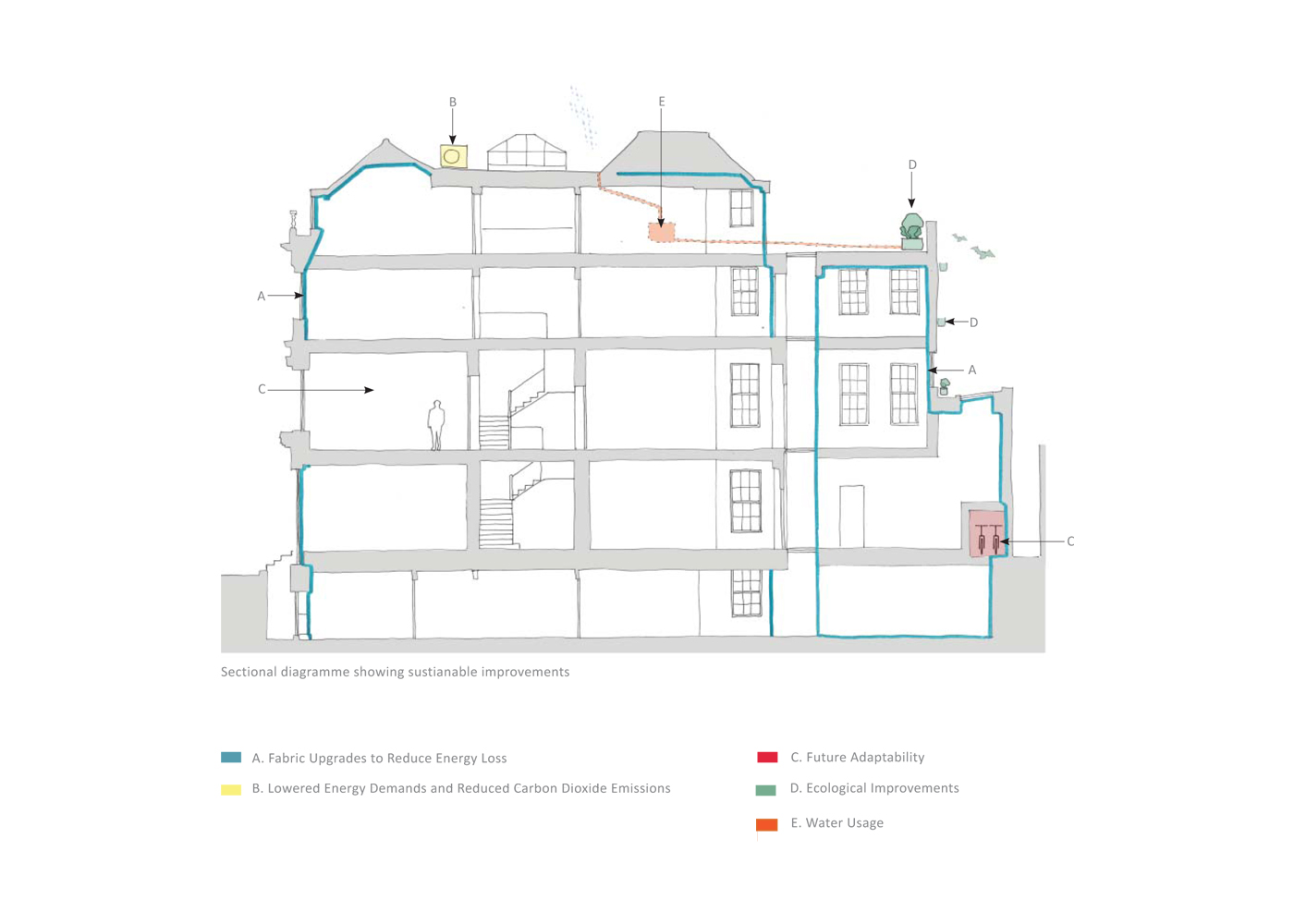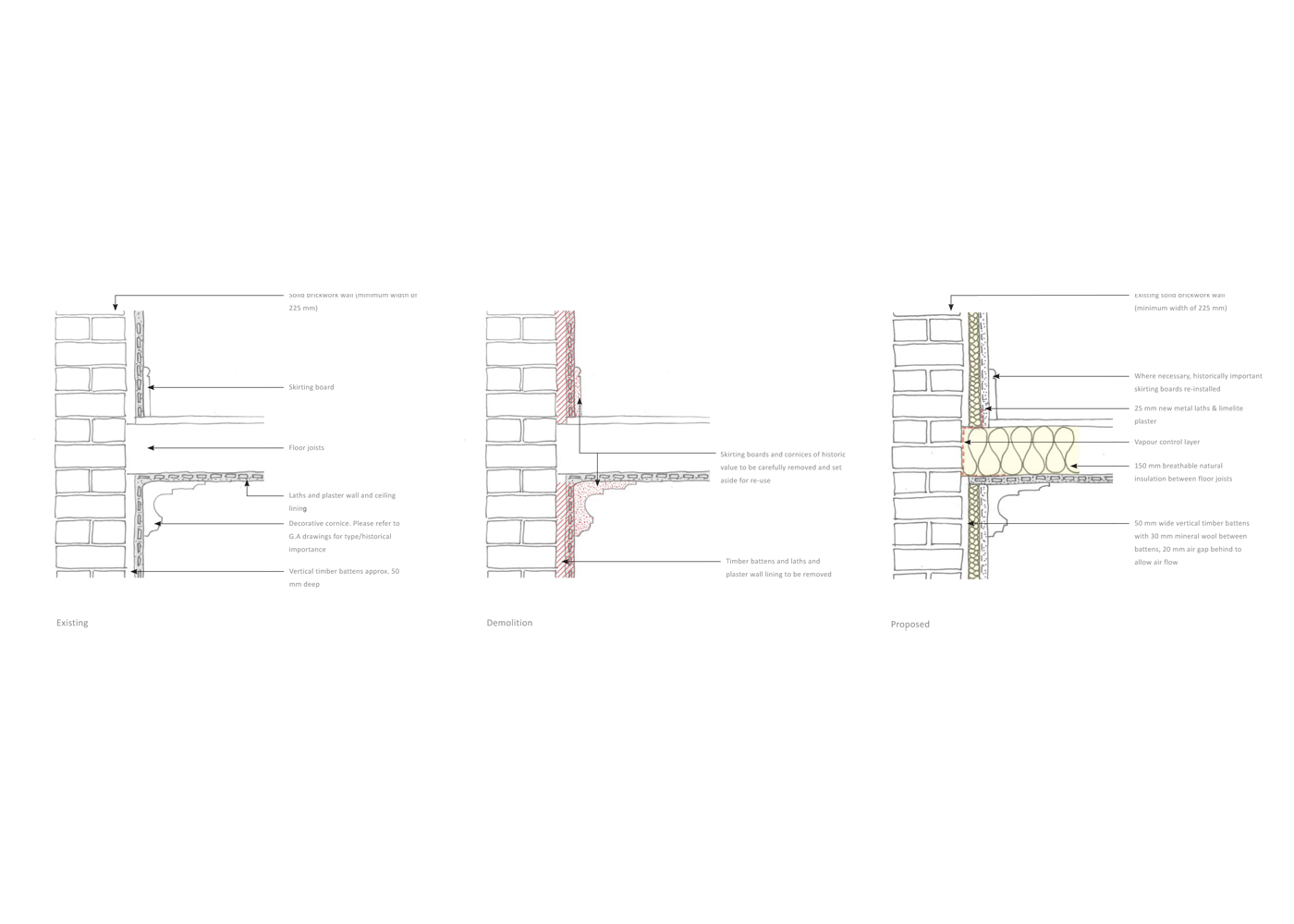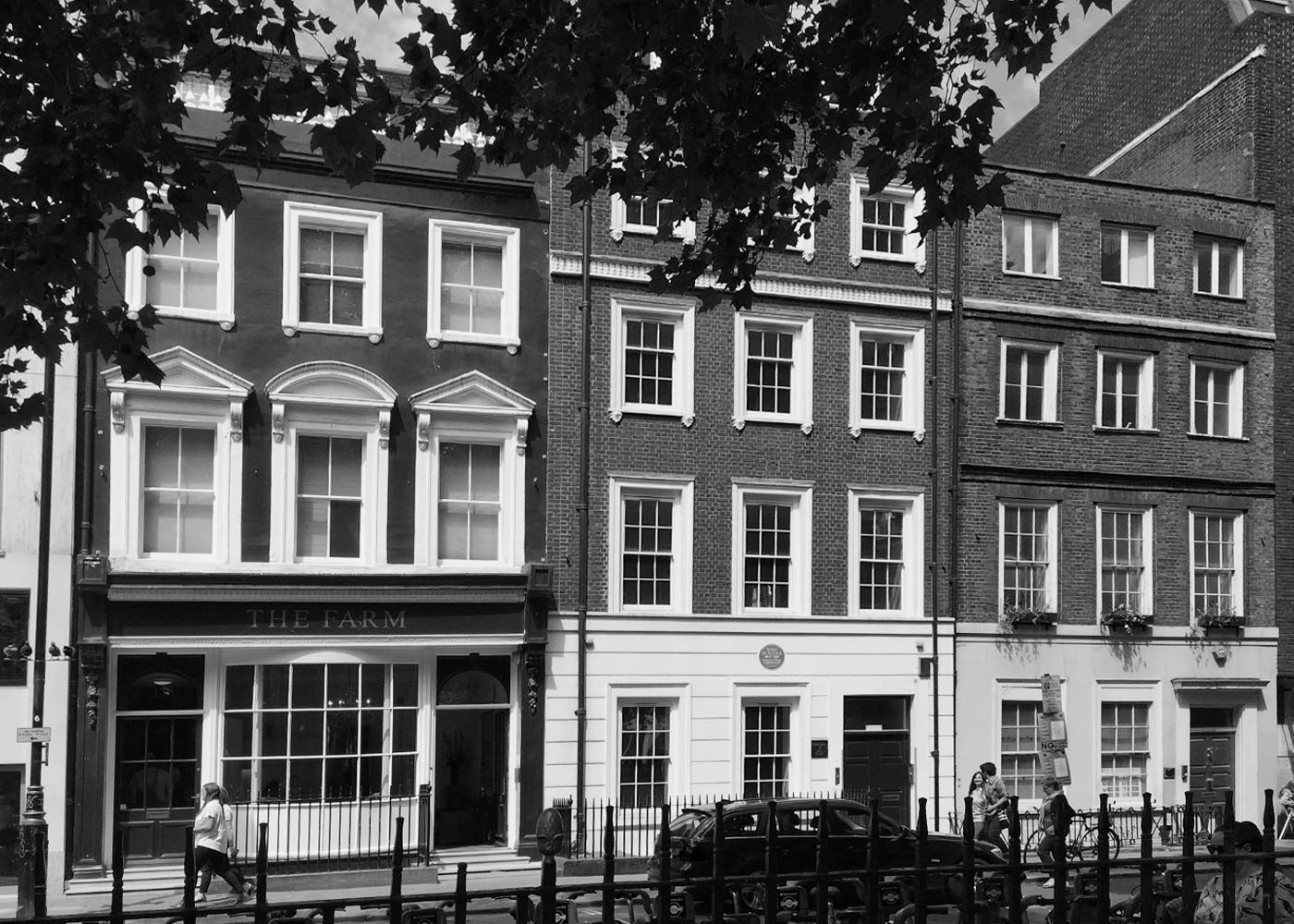Rodić Davidson and the team of consultants developing proposals for the renovation of a Grade II* listed property in Soho have been granted planning permission and listed building consent, with the committee unanimously overturning the officer’s recommendation for refusal. The proposals also had the full support of the Soho Society and English Heritage and, as noted by a councillor, was unusual with no objections from any local residents and businesses. This project is the first ever Grade 2* Listed Building to achieve a BREEAM outstanding rating for a domestic refurbishment.
Our proposal seeks to restore extensive alterations made to the historic fabrics over the years whilst simultaneously upgrading key elements in order to ensure the long-term use and preservation of this Grade II* listed property. One of the most significant changes is the demolition and reconstruction of the late 19th Century rear extension with a new glazed link to connect it with the main building, thus revealing the historic canted bay and fenestration form. Using a similar design approach, the introduction of a contemporary freestanding metal stair at ground floor restores the historic plan form and circulation patterns of the building alongside a smaller replacement lift serving all floors allowing the restoration of the original plan form of principal rooms facing onto Soho Square.
The client and design team are also striving to achieve a BREEAM outstanding rating through elements including improvements to the fabric thermal performance and an air source heat pump. The roof, although partially original in form, will be adapted and turned into a roof terrace and the non-original lantern will also be replaced to improve the thermal performance. The new terrace will provide private amenity for the family home and a valuable space in the heart of Soho whilst simultaneously establishing new ecological benefits, including rainwater harvesting and wildlife habitats.
The circumstances surrounding the committee meeting can be distilled to the conflict between heritage and environmental concerns. A paradox emerged where the strong desire to preserve heritage and the fabric of a listed building for future generations, even the relatively insignificant and less historic elements, had the potential to in-turn render the building not fit for purpose in a modern, climate conscious age. As councillor Antonia Cox commented:
“If we don’t allow people to occupy these kinds of buildings, they certainly won’t be conserved, and I think what we have here is a pretty impressive attempt to render the building ecologically acceptable to the very highest degree of BREEAM outstanding and we should be getting behind the aspiration and not be getting in its way.”
This project brings into question the larger debate of how conservation and preservation should be considered alongside future adaption and sustainability. As is demonstrated by the successful outcome of this project, we believe it is possible to achieve both demands for preserving and enhancing our architecture heritage whilst taking these historical places forward with us. A partial response to this broad debate emerged as the committee chairman concluded,
“the harm resulting from the alterations to the listed building is outweighed by the public benefit of achieving a scheme of excellence in sustainability and the contribution that this makes towards addressing the climate emergency. “


